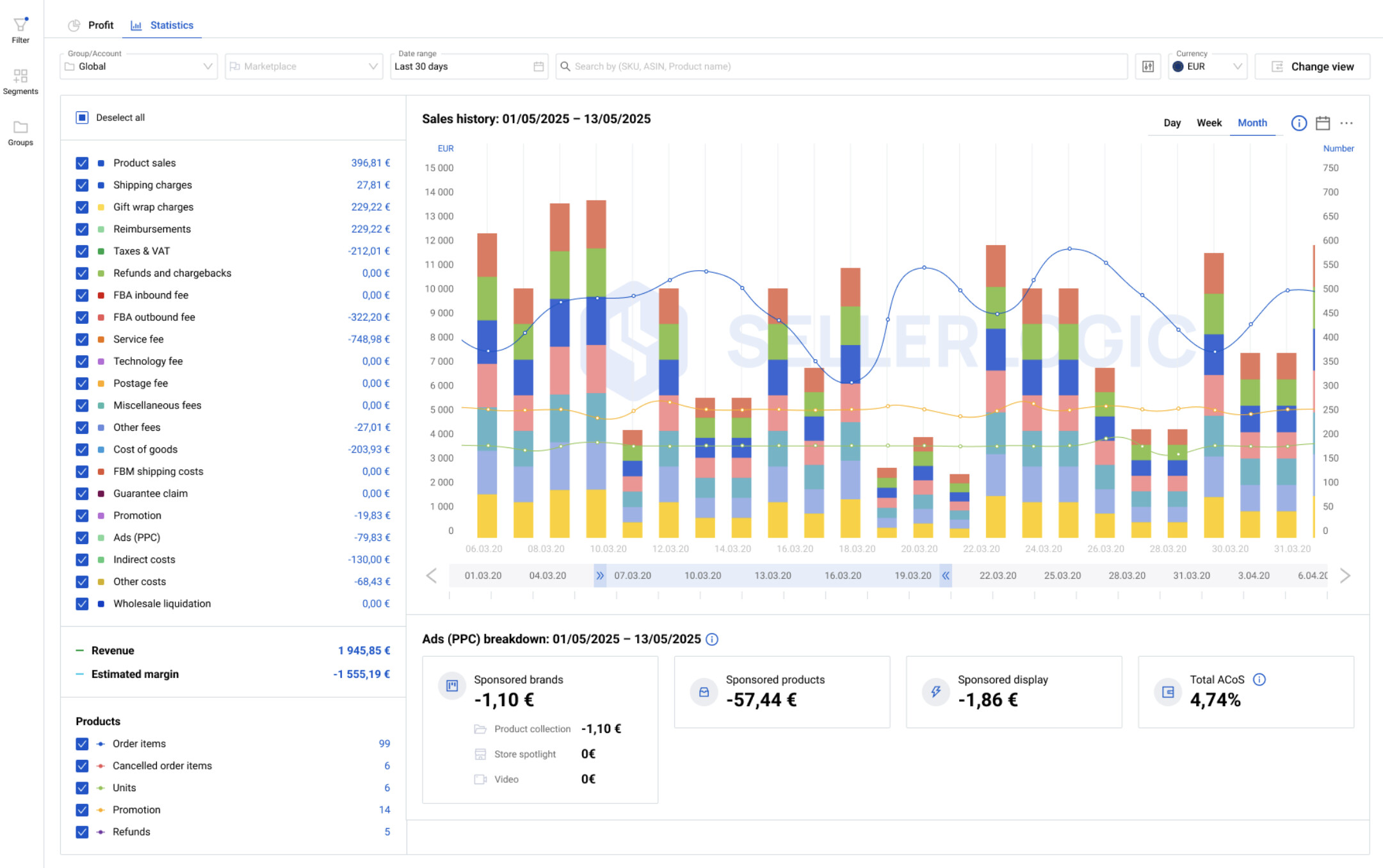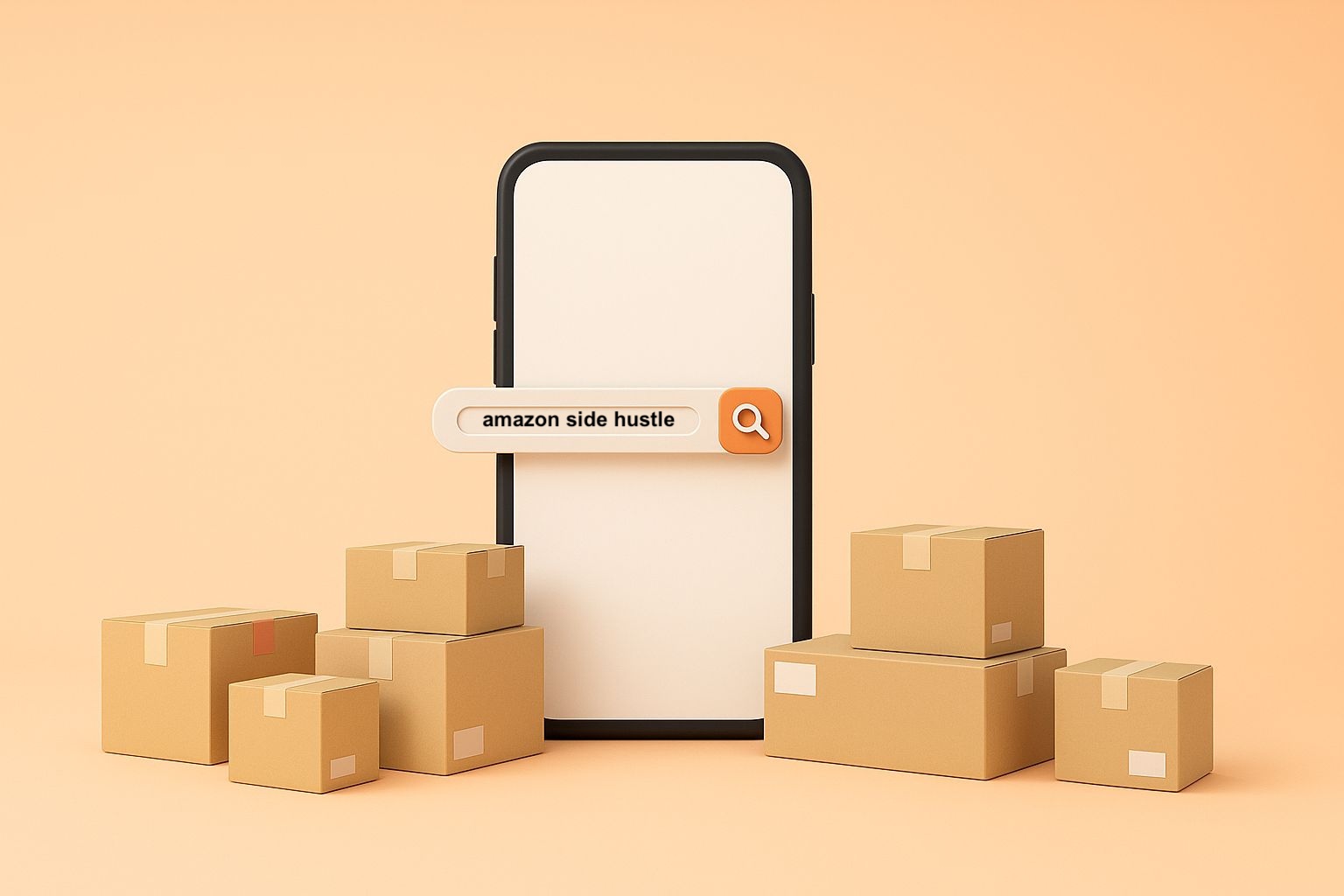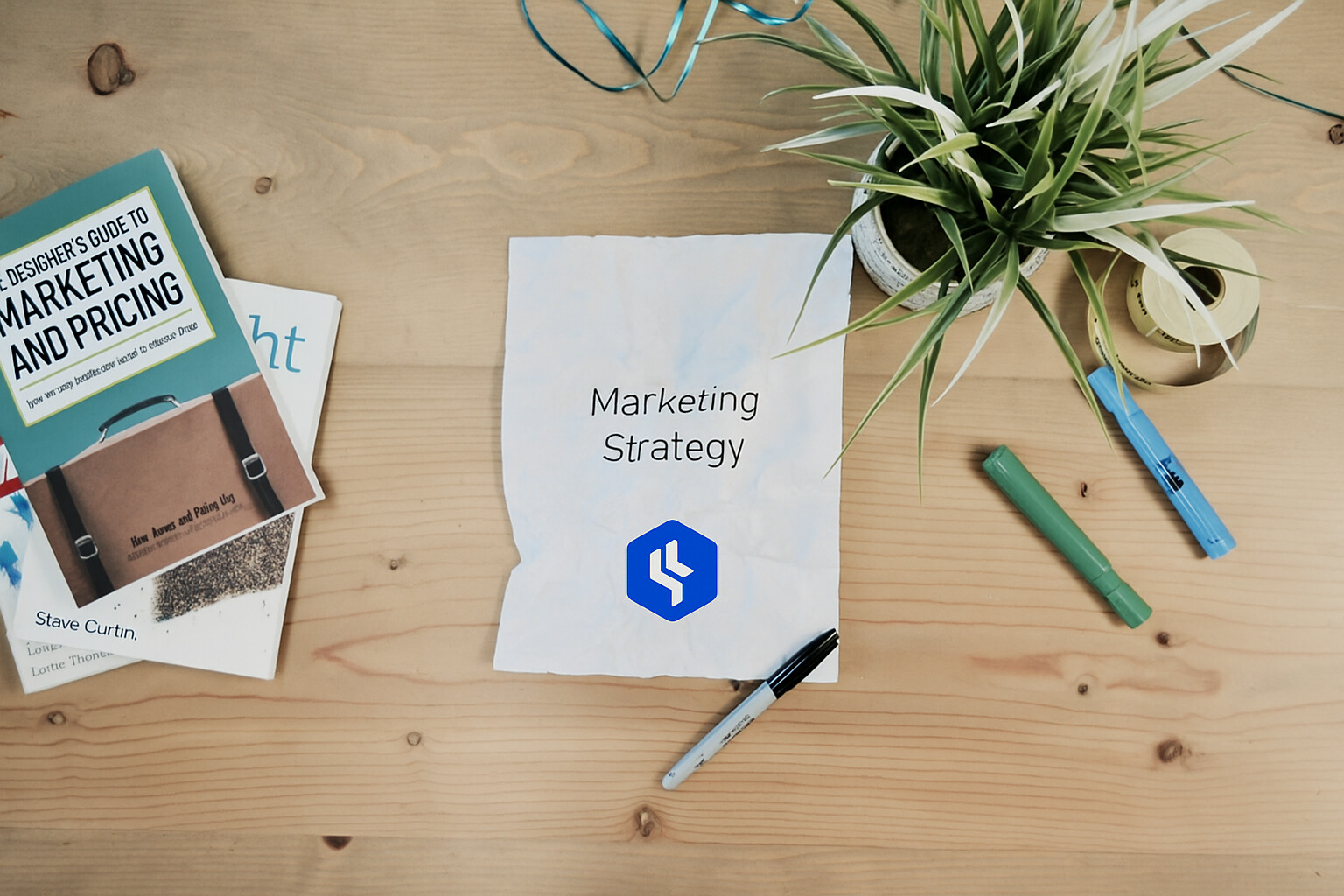How to Resell on Amazon – Hot Products in 2025

You’ve probably heard the term “reselling” used loosely in conversations with fellow Amazon or e-commerce sellers and wondered whether it’s a fixed term on Amazon. It’s not. Reselling simply describes the process of buying products at a lower cost from one source and then selling them elsewhere for a profit — in this case, on Amazon. Anyone can do it, but there are many ways to do it better than most. If you want to learn how to resell on Amazon specifically, you’ve found the right article.
Not only will we walk you through, step by step, how to buy and resell items on Amazon, but we’ve also prepared a list of the best-selling products for 2025.
What Is Amazon Reselling?
When you’re learning how to become a reseller on Amazon, the first step is to understand what reselling actually is. In reselling, products are sourced from various places and then sold on another platform for a profit. Buying in bulk is also a major part of this process, as it allows you to achieve better margins.
In addition, other strategies can be applied, for example:
There are essentially no limits to your creativity — as long as the difference between the purchase price and the selling price is large enough to make the business profitable.
Is Reselling legal?
Reselling on Amazon and similar platforms is legal, and most third-party sellers follow this model by purchasing branded products in bulk and reselling them for profit. Alternative methods like dropshipping and arbitrage are also legal and you don’t need a large inventory to get started. However, sourcing from gray market suppliers – who offer discounted goods outside official distribution channels – can cause issues with Amazon, as these products may lack warranties or support despite being legal.
How to Start Reselling on Amazon: Step-by-Step Guide
1. What are you selling?
First and foremost, identify your niche. Find products that interest you and that also see a lot of traffic on Amazon’s platform. Tools like Amazon’s Best Seller list, Google Trends, or product research tools such as Keepa are invaluable if you want to understand market behavior and how to become an Amazon reseller.
Ask yourself:
Avoid buying large quantities until you’re sure the product will sell. Research product demand thoroughly.
2. Register as an Amazon Seller
Visit Amazon’s “Become a Seller” page and sign up. You have the choice between an Individual or Professional seller account. The Professional account costs $39.99/month and is the better option for you if you are serious about learning how to make money reselling on Amazon. It also enables you access to key features like the Buy Box.
3. Source Your Products Responsibly
Once you know what to sell, be sure that you purchase your inventory from sources that are reliable. Here are a few to take into consideration:
Buy in quantities that match your business goals and monitor your performance regularly. Tools like SELLERLOGIC Business Analytics not only show you how profitable your Amazon store is, but also which products are performing well and which ones are just sitting as shelfwarmers — all at a glance. Best of all, Business Analytics is free to use for startups (under 100 orders per month).
4. Create and Optimize Your Product Listings
Once your products are ready to ship, go to Amazon Seller Central and list your products. Key things to consider when learning how to resell on Amazon:
When piecing together your product page, Amazon A+ Content is invaluable for sellers of every level. Click on the link to find out more about Amazon’s content creation tool.
5. Choose a Fulfillment Method
Once orders start coming in, you’ll need a reliable fulfillment process:
If you can’t reliably meet shipping and customer service standards on your own, FBA is strongly recommended.
6. Increase Your Buy Box Share
The Buy Box is the “Add to cart” button on Amazon listings. Winning it significantly boosts sales. Nobody can win it all the time, but here are relevant key points that will improve your chances:
These are only four of 13 known factors that will boost your chances of winning the Buy Box. Read about all 13 factors in our article about how repricing can boost your business and seller rating. If you prefer a more active approach, try the 14-day free trial of the SELLERLOGIC Repricer and see how a higher Buy Box share actively increases your sales and revenue.
Reselling Methods: Arbitrage vs. Wholesale vs. Dropshipping
One part of figuring out how to become a reseller on Amazon is choosing the right reselling method. All have their advantages and disadvantages. Let’s have a closer look.
Retail/Online Arbitrage
Wholesale
Dropshipping
Important Info
Although Fulfillment by Amazon (FBA) is often referred to as a business model, this is not quite correct. Amazon FBA is a shipping method that also contains a lot of perks for the sellers that use it. Sellers that sign up for FBA and enable Amazon to handle their shipping, benefit from the entire logistics process – starting from the storage of products, picking and packing after the order is received, as well as the shipping process itself of course. On top of this, Amazon takes care of customer service and returns management if sellers want to use the program for a product. Almost every seller uses Amazon FBA at least for a part of their assortment.
How to Find Products to Resell on Amazon

Now, let’s get down to business. Learning how to resell things effectively on Amazon often boils down to immaculate product and market analysis. Because if there is a lack of demand, the competition is too great, or the product is unsuitable, this can lead to sellers being stuck with the goods.
When Is it Worth it? Criteria for Reselling Products
Not every product of yours will become a bestseller. No amount of thorough research and preparation can predict what the future holds, what trends will be hyped this summer, what products will be forgotten in two months. However, thorough research and a systematic approach most certainly do increase the likelihood of finding a profitable product – often these are practical products. The following criteria should be met for this.
Demand: Choose products with proven, stable demand over time—not just based on your personal preferences or short-term trends.
Competitive Pressure: Avoid oversaturated markets. Instead, look for niches with lower competition to improve your chances of success.
Product Quality: High-quality products reduce returns and negative reviews. Crucial for building long-term supplier relationships and customer trust.
Consumables: Focus on everyday items that run out and need frequent reordering. These usually have consistent demand, but be mindful of regulations (especially for food).
Margin: Aim for high profit margins, but don’t forget to factor in all extra costs like shipping, Amazon fees, and overheads.
Format: Smaller and lighter products are cheaper and easier to store and ship, both for you and through FBA.
Legal Aspects: Always check for trademark, copyright, and safety compliance – especially for regulated goods like food or hazardous materials.
Suitable Product Categories for Amazon Reselling
Experience shows that certain categories on Amazon often offer stable demand and solid profit margins, making them generally suitable for resale. While this is no substitute for doing your own market research, they are invaluable pointers of where you can look first.
Electronics and accessories
Electronic goods are not subject to seasonal effects, are in high demand, and experience many price changes that resellers can take advantage of.
Categories: Headphones, phone cases, chargers, smartwatches, speakers.
Examples: Apple AirPods Pro 2 — consistently in top‑seller lists; excellent margins due to brand loyalty and demand / Anker portable chargers and cables — especially 10,000 mAh banks and USB‑C units. Anker devices account for tens of thousands of monthly sales / Amazon Fire TV Stick 4K / 4K Max — perennial favorites in the streaming device category, great volume and price flexibility.
Toys and board games
Toys sell especially well around Christmas and Easter, with buyers often willing to pay more. Limited or rare items can fetch higher prices. Plus, toys are usually small and pre-packaged, helping sellers cut costs.
Categories: LEGO sets, board games (e.g. Monopoly), action figures, dolls.
Examples: Monopoly Go!, Catan Junior, Azul, and Guess Who? regularly appear among best sellers.
Fashion
Even though the return rate is exceptionally high, fashion products tend to bring home a tidy profit. Especially sought-after brands, limited editions, and other hard-to-find products can have significant profit margins and are easy to resell.
Categories: Sportswear from well-known brands, sneakers, handbags, sunglasses.
Examples: Brooks Adrenaline GTS 23 and Zove Wide Walking Sneakers are hot sellers for daily comfort and foot health, with strong reviews and consistent volume / Affordable yet stylish seasonal fashion drops under $30 (dresses, sneakers, straw bags) surge in popularity during summer months.
Books and learning materials
How to resell books on Amazon have a constant market value and can therefore be sold well, even in used condition. However, this is by no means true for all books, which is why sellers must proceed carefully when selecting.
Categories: Specialized literature, bestselling novels, textbooks, antiques.
Examples: While bestseller lists vary, specialized literature, textbooks, and popular novels hold their value over time. However, product availability and Amazon categories fluctuate too much to identify specific titles universally. Still, sought‑after or specialty books (e.g., rare editions, study guides) remain reliable reselling targets.
Sports and outdoor equipment
Brand products are also key here. Products in the areas of sports, fitness, and outdoor are in demand and have been trending since the Corona pandemic. Outdoor equipment is also very expensive, making used goods sought after as well.
Categories: Yoga accessories, fitness equipment, hiking and trekking gear, bicycle equipment.
Examples: Top gear like NordicTrack treadmills and Sunny Health equipment are consistently strong sellers in overall e‑commerce reports.
Baby equipment
Products in this category are often not only consumables that are frequently repurchased but also higher-priced. At the same time, parents are willing to pay accordingly for high-quality and safe goods.
Categories: Strollers, baby food, toys, baby monitors
Examples: Some of the best-selling baby gear on Amazon includes the Evenflo Pivot Xplore and Pivot Modular Travel System, which are popular for being practical and great value combo sets / Cybex strollers like the MELIO Carbon and Libelle are loved especially in Japan for being lightweight and easy to fold, making them perfect for travel / UPPAbaby Vista V3 is another favorite among parents thanks to its sturdy design, versatility, and how well it holds up over time.
Seasonal products
Seasonal products have a peak at a certain time of the year, but are then in extremely high demand.
Examples: Christmas decorations, Halloween costumes, Easter items
Collectibles and limited editions
To sell these products, a certain amount of know-how in the respective field is required to identify products that sell out quickly but are consistently in demand. However, if one has this knowledge, sales opportunities with high profit margins arise.
Examples: Limited sneakers, rare LEGO sets, Pop figures, vinyl records
How to Start Reselling on Amazon – Tools to Grow Fast

Here’s a thing you’ll never hear a seller say: “Yeah, I really miss doing everything manually. I’d rather invest all this free time I have now into repetitive and tedious tasks.” Software, tools, and AI make our work life easier. This also applies to resellers. Finding products, calculating prices, monitoring performance – the examples of application areas where digital support is quite useful are numerous. Below, we provide not only an overview of the application areas but also examples of (partly free) reselling tools for Amazon sellers.
Repricing
Product research
Keyword research
Inventory Management
Competitive analysis
Finances and profitability
Conclusion

When planning how to resell on Amazon in 2025 be sure to take a strategic, informed approach. Nowadays, it’s no longer just about finding cheap products and hoping for the best. If you want to be successful as a reseller today, you should combine data, tools, and a deep understanding of the market to stay competitive.
Whether you choose arbitrage, wholesale, or dropshipping, your success will hinge on how well you identify demand, avoid overcrowded niches, and keep your product quality up. Choosing the right fulfillment method is also critical – FBA can save you time and boost your Buy Box share, while FBM offers more control but comes with higher responsibility.
We can’t stress this enough: don’t underestimate the value of automation. AI-powered tools like the SELLERLOGIC Repricer, Lost & Found Full-Service and Business Analytics can help you optimize pricing, monitor performance, and recover lost FBA reimbursements – all without lifting a finger. And while there’s no one-size-fits-all product category, taking the time to analyze your market and inventory pays off in the long run.
In short: Combine smart research, powerful tools, and a seller mindset – and you’ll be well-positioned to scale your Amazon business in 2025 and beyond.
Frequently Asked Questions
Earnings vary greatly, depending on product margins, sales volume, and fees. Many earn between a few hundred to several thousand euros monthly.
Yes, reselling is legal as long as no rights are violated and the products were acquired legally.
Sellers pay €39 monthly for a professional account, plus sales fees of 8-15% depending on the category.
Reselling means buying products cheaply and selling them at a higher price. The difference between the purchase and selling price constitutes the profit.
Products with stable demand and high profit margins are worthwhile. Examples include electronics, collectibles, or limited editions. However, which specific products can be profitable varies greatly and depends, for example, on seasonal effects.
Electronics, household items, toys, clothing, and books often sell well. However, there are also many competitors in those categories. Niches with less competitive pressure can be a rewarding alternative.
Branded products on sale, limited editions, collectibles, or rarities can be bought cheaply and sold at a higher price. It is important that the price difference between purchase and sale is large enough, there is stable demand, and competition is manageable.
Yes, it is legal as long as no legal regulations or rights, such as copyright, are violated.
In general, electronics, fashion, toys, collectibles, and household goods are well-suited for reselling. However, this must be decided on an individual basis, as many factors influence the chances of sale.
Limited editions, rare collectibles, high-priced electronics, and branded clothing often fetch high prices. Nevertheless, a detailed market analysis is important to avoid purchasing unsellable items.
Image credits in the order of the images: © AiiNa – stock.adobe.com / © snn_art – stock.adobe.com / © Summit Art Creations – stock.adobe.com / © AiiNa – stock.adobe.com







